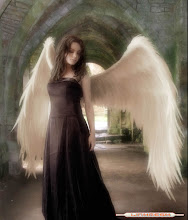Sujeto
Verbo
Objeto
Objeto Indirecto
Marian gave to Rubi doll
---S------V------ OI---O
the perrro arturo is very nice
-------S-----OI------------ V
Carlos will present flowers to his girlfriend
---S-----------V------- O------------- OI
Gonzalo gave him a book
----S------V-----------O
the boy ate cake
-----S---V---O
the man kicket a ball
------S-----V------O
the dog barks lot
-----S-----V
the girl likes shoes
-----S----V----O
the children likes sweet
--------S------V-----O
A woman hit a cat
------S-----V---O
COGNADOS
Los cognados son palabras parecidas en español.
Se clasifican de esta manera:
PREGUNTAS EN INGLES
El pronombre o adjetivo interrogativo va en primer lugar, al igual que en español
Preguntas con Prepocición
Where is the school?
what school you?
Who cares?
the children won the game?
where you live?
preguntas acerca de las personas: who? (¿quién?) who(m)? (¿a quién?) whose? (¿de quién?) which? (¿Cúal?) what? (¿qué?) which? (¿Cúal?) where? (¿Dónde?) why? (¿por qué?) when? (¿cuándo?) how? (¿cómo?).
how old are you?
whose is this house?
how many are there in the beach?
why you a geniun?
when come my house?
where live your sister?
Los artículos: A (AN) y THE
indefinido: singular " a (an)"
uno,una
Definido:plural y singular "the"
la, el, las, los
Ejemplos:
a stain on my blouse
a party crazy
a horse white
an obsesion
an obese
the gorilla is black
the dogs bark
the groom of my friend
the pig
the pigs
Sustantivos contables y no contables
Contables: son aquellos que designan realidades que se pueden aislar y contar.
No contables: son aquellos que nombran sustancias o materias que no se pueden contar.
Ejemplos:
a car red = contable
the book of library = contable
a beautifull woman = contable
a rabbit white= contables
the dwan is very nice= no contables
the oil is very productive= no contable
the milk of cow is nutritious= no contable
you are adorable= no contable
the beach is radiant= no contable
Adjetivos descriptivos
Estos se pueden describir de esta forma:
Tamaño
Forma
Edad
Color
Origen
Material
Ejemplo:
the black cat
is your intelligent friend
The fat man
a large table
she is brunette woman
four red stools
the of long hair cristina
a brown German leather bag
a lovely 19th century glass vase
an antique silver sugar pot
Pronombres personales

Ejemplos
it is a horse large
yours the is wrist
you are good people
they are arrogant
she is beatifull
my name is Sebastiana
I am twenty nine years old
You live in Barcelona
She has got a dog
He makes the bed every morning
It runs inside the house
We sing a good song at the disco
They write an e-mail to the teacher
Sustantivos en Plural y singular
Generalmente, puedes transferir sustantivos en inglés muy fácilmente en sus formas plurales. Simplemente debes agregar una (s) o (es) al final de la palabra.
La terminación (es), es utilizada si una (s) simple suena demasiado áspero
Cuando el sustantivo presenta una de las siguientes terminaciones forma el plural añadiendo es
Ejemplo:
the fox - the foxes
the focus - the focuses
the beach - the beaches
the church - the churches
the flight - the flights
the daughter - the daughters
el artículo definido 'the' es utilizado tanto para sustantivos singulares como plurales
Los sustantivos que terminan en (y) forman el plural cambiando la (y) por una (i) latina, agregando (es).
Ejemplo:
the city - the cities
the country - the countries
the body - the bodies
the cherry - the cherries
the strawberry the strawberries
the baby - the babies
Hay una excepción para la regla anterior: Si una vocal se encuentra antes de la Y se agrega una S para crear la forma plural:
the donkey - the donkeys
the boy - the boys
Los sustantivos que terminan en (y) forman el plural cambiando la (y) por una (i) latina, agregando (es).
Ejemplo:
the city - the cities
the country - the countries
the body - the bodies
the cherry - the cherries
the strawberry the strawberries
the baby - the babies
Hay una excepción para la regla anterior: Si una vocal se encuentra antes de la Y se agrega una S para crear la forma plural:
the donkey - the donkeys
the boy - the boys


gracias
ResponderBorrar